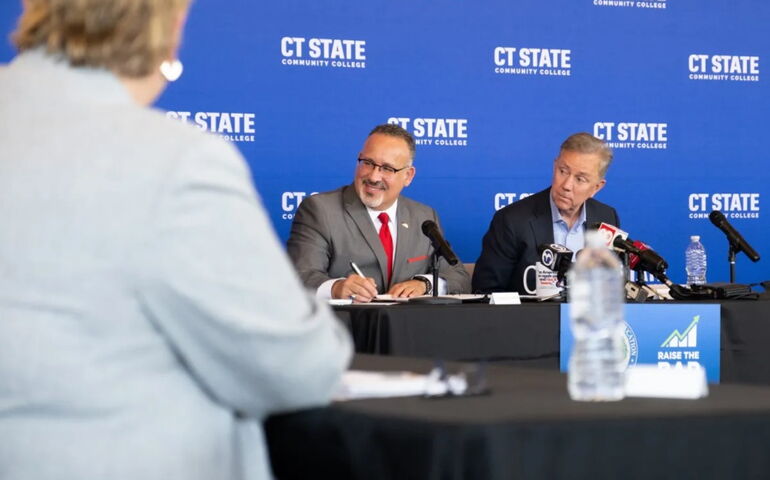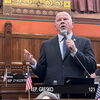Processing Your Payment
Please do not leave this page until complete. This can take a few moments.
-
News
-
Editions
-
- Lists
-
Viewpoints
-
HBJ Events
-
Event Info
- 2024 Economic Outlook Webinar Presented by: NBT Bank
- Best Places to Work in Connecticut 2024
- Top 25 Women In Business Awards 2024
- Connecticut's Family Business Awards 2024
- What's Your Story? A Small Business Giveaway 2024 Presented By: Torrington Savings Bank
- 40 Under Forty Awards 2024
- C-Suite and Lifetime Achievement Awards 2024
- Connecticut's Health Care Heroes Awards 2024
-
-
Business Calendar
-
Custom Content
- News
-
Editions
View Digital Editions
Biweekly Issues
- April 29, 2024
- April 15, 2024
- April 1, 2024
- March 18, 2024
- March 4, 2024
- February 19, 2024
- February 5, 2024
- January 22, 2024
- January 8, 2024
- + More
Special Editions
- Lists
- Viewpoints
-
HBJ Events
Event Info
- View all Events
- 2024 Economic Outlook Webinar Presented by: NBT Bank
- Best Places to Work in Connecticut 2024
- Top 25 Women In Business Awards 2024
- Connecticut's Family Business Awards 2024
- What's Your Story? A Small Business Giveaway 2024 Presented By: Torrington Savings Bank
- 40 Under Forty Awards 2024
- C-Suite and Lifetime Achievement Awards 2024
- Connecticut's Health Care Heroes Awards 2024
Award Honorees
- Business Calendar
- Custom Content
Despite FAFSA trouble, Miguel Cardona points to CT successes
 SHAHRZAD RASEKH / CT MIRROR
U.S. Secretary of Education Miguel Cardona and Gov. Ned Lamont participate in a roundtable discussion at CT State Middlesex.
SHAHRZAD RASEKH / CT MIRROR
U.S. Secretary of Education Miguel Cardona and Gov. Ned Lamont participate in a roundtable discussion at CT State Middlesex.
Against the backdrop of a troubled FAFSA financial aid process for high school students that has captured national headlines and sharp criticism, U.S. Secretary of Education Miguel Cardona returned to Connecticut on Tuesday to discuss a program that has broad support: expanding postsecondary education opportunities for incarcerated people.
While the purpose of the meeting at CT State Middlesex was to discuss the Second Chance Pell program with Gov. Ned Lamont and state education officials, Cardona also doubled down on changes to the Free Application for Federal Student Aid form that has recently been criticized for significant delays and bugs.
Cardona said he didn’t feel the shift to the new application was rushed, “because there are thousands of students that have eligibility now that wouldn’t have had it before.”
“We had a FAFSA system that was older than me. We’re fixing it. It’s hard work. We’re going to get it right. We have over 7 million processed,” Cardona said. “We’re committed to getting it right and making it better every year. I know with this better FAFSA, we have up to 600,000 more students that have access to higher education, and for me, that’s worth fighting for.”
But Cardona kept the focus on the federal grant that funds access to postsecondary education opportunities for eligible incarcerated individuals.
Cardona, Lamont and other officials emphasized how “education is an equalizer” and the importance of second chances, particularly for those who are incarcerated.
“An hour ago, I was in a room talking to students who are at Cheshire Correctional, and I asked them, ‘What should people across the country know about prison education programs?'” Cardona said. “Without missing a beat, what I heard is they make the community safer. … [Another] person said it opens doors where you can push yourself to a higher level. … One said ‘There’s more good that I can do.'”
“The level of dignity and life’s purpose that I heard from those folks today is something that will stay with me forever,” Cardona said.
April marks both community college and second chance month, officials said.
In 2015, the Pell Grant was expanded to include eligible incarcerated individuals. Since then, the state’s community college system has served over 2,000 incarcerated students across nine Connecticut prison facilities, CT State President John Maduko said.
One of those students was Brian Sullivan Sr., who said he served 30 years in the prison system and that the Second Chance Pell program “was a key essential for me being where I am.”
“Second Chance allowed me to see myself in a different light,” Sullivan said, adding that the investment in the education of incarcerated people not only reduces recidivism but also “makes the streets safer, reduces crime and increases property value.”
“I don’t think the focus is enough on Second Chance Pell and what the universities in our state and our state college systems are doing and how important it is if 95% of the 2 million people incarcerated are going to be released,” Sullivan said. “Education is the equalizer. We need to focus more on that.”
Pamela Frost, a mathematics professor at CT State Middlesex, has taught students like Sullivan and said that the impact of these courses doesn’t necessarily come from the actual academics themselves but how the courses build up self-esteem.
“Each semester, the attitudes and the minds kept changing. … It sparked something in them that they never would have imagined,” Frost said. “The belief in themselves is what’s important, and that’s what we teach.”
Across the country, about 41% of incarcerated individuals don’t hold a high school diploma and only 24% of people in federal prisons have received any postsecondary education, according to a 2018 report from the Center for American Progress that used data from the Bureau of Justice Statistics.
“For any individual, not having a high school diploma closes doors to higher education, training, and employment opportunities. For formerly incarcerated individuals, the disadvantage of not having a high school diploma is compounded by the myriad barriers to successful reentry and additional stigma they face as they reenter their communities and the workforce,” the report said. “On average, formerly incarcerated individuals earn 11% less than those with no criminal record doing the same job. They are also 15 to 30% less likely to find a job in the first place. While investing in prison education programs will require upfront funding, the long-term economic benefits for states and localities are considerable. For every dollar spent on prison education, taxpayers are estimated to save four to five dollars that would have been spent on incarceration.”
Late last year, a report commissioned by Dalio Education found that more than 119,000, or about 19%, of young people in Connecticut between the ages of 14 and 26 were “at risk” or “disconnected” in 2021-22.
Lamont referenced the report Tuesday, noting that efforts like the Second Chance Pell reopen opportunities for both former and current students.
“We heard from two gentlemen [earlier today] on how the opportunity to get education while incarcerated changed their lives. … That’s what we’re trying to [do to] get our disconnected kids back — to help them believe in themselves,” Lamont said.
Cardona added that increasing Pell Grants allows more opportunities to target the “untapped potential in this country.”

2022 Giving Guide
This special edition informs and connects businesses with nonprofit organizations that are aligned with what they care about. Each nonprofit profile provides a crisp snapshot of the organization’s mission, goals, area of service, giving and volunteer opportunities and board leadership.
Learn more
Subscribe
Hartford Business Journal provides the top coverage of news, trends, data, politics and personalities of the area’s business community. Get the news and information you need from the award-winning writers at HBJ. Don’t miss out - subscribe today.
Subscribe
2024 Book of Lists
Delivering Vital Marketplace Content and Context to Senior Decision Makers Throughout Greater Hartford and the State ... All Year Long!
Read Here-
2022 Giving Guide
This special edition informs and connects businesses with nonprofit organizations that are aligned with what they care about. Each nonprofit profile provides a crisp snapshot of the organization’s mission, goals, area of service, giving and volunteer opportunities and board leadership.
-
Subscribe
Hartford Business Journal provides the top coverage of news, trends, data, politics and personalities of the area’s business community. Get the news and information you need from the award-winning writers at HBJ. Don’t miss out - subscribe today.
-
2024 Book of Lists
Delivering Vital Marketplace Content and Context to Senior Decision Makers Throughout Greater Hartford and the State ... All Year Long!
ABOUT
ADVERTISE
NEW ENGLAND BUSINESS MEDIA SITES
No articles left
Get access now
In order to use this feature, we need some information from you. You can also login or register for a free account.
By clicking submit you are agreeing to our cookie usage and Privacy Policy
Already have an account? Login
Already have an account? Login
Want to create an account? Register
Get access now
In order to use this feature, we need some information from you. You can also login or register for a free account.
By clicking submit you are agreeing to our cookie usage and Privacy Policy
Already have an account? Login
Already have an account? Login
Want to create an account? Register






0 Comments